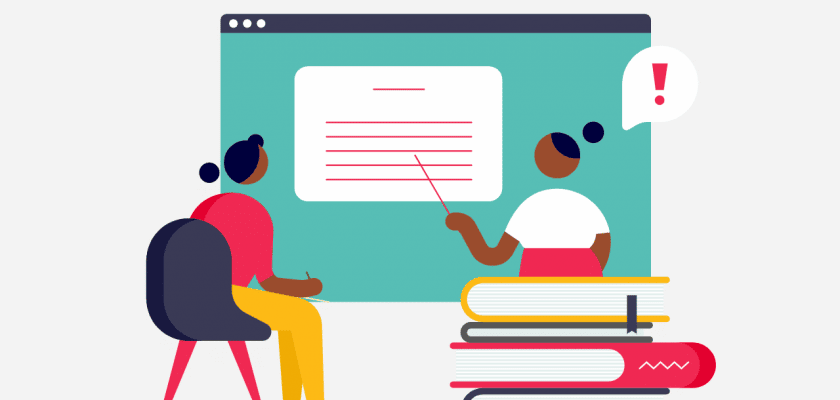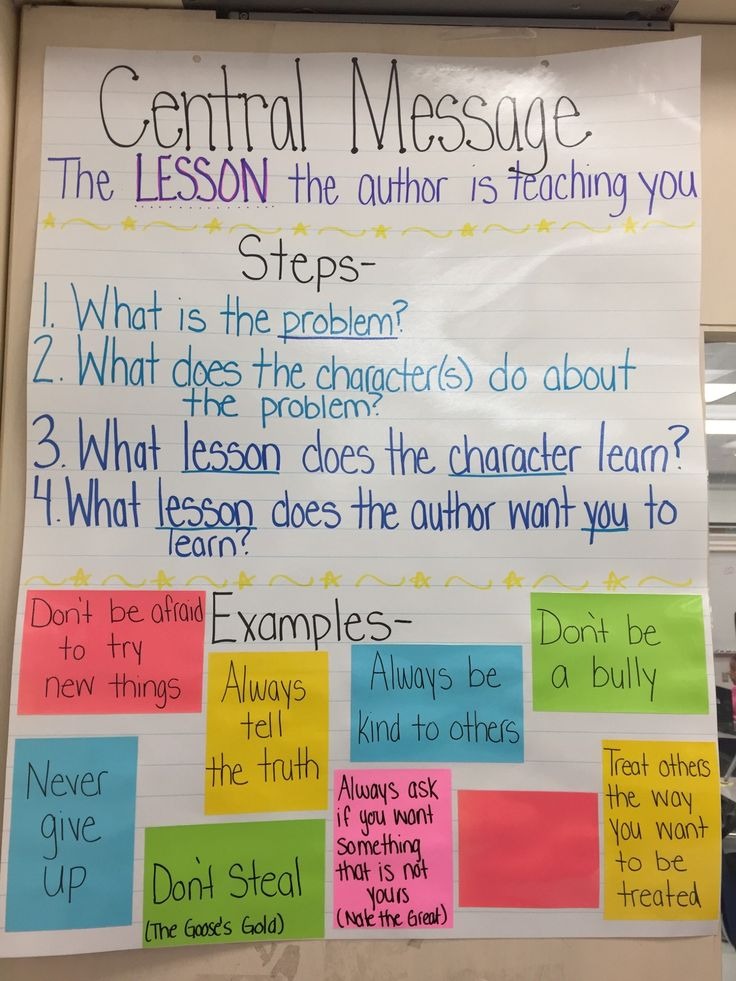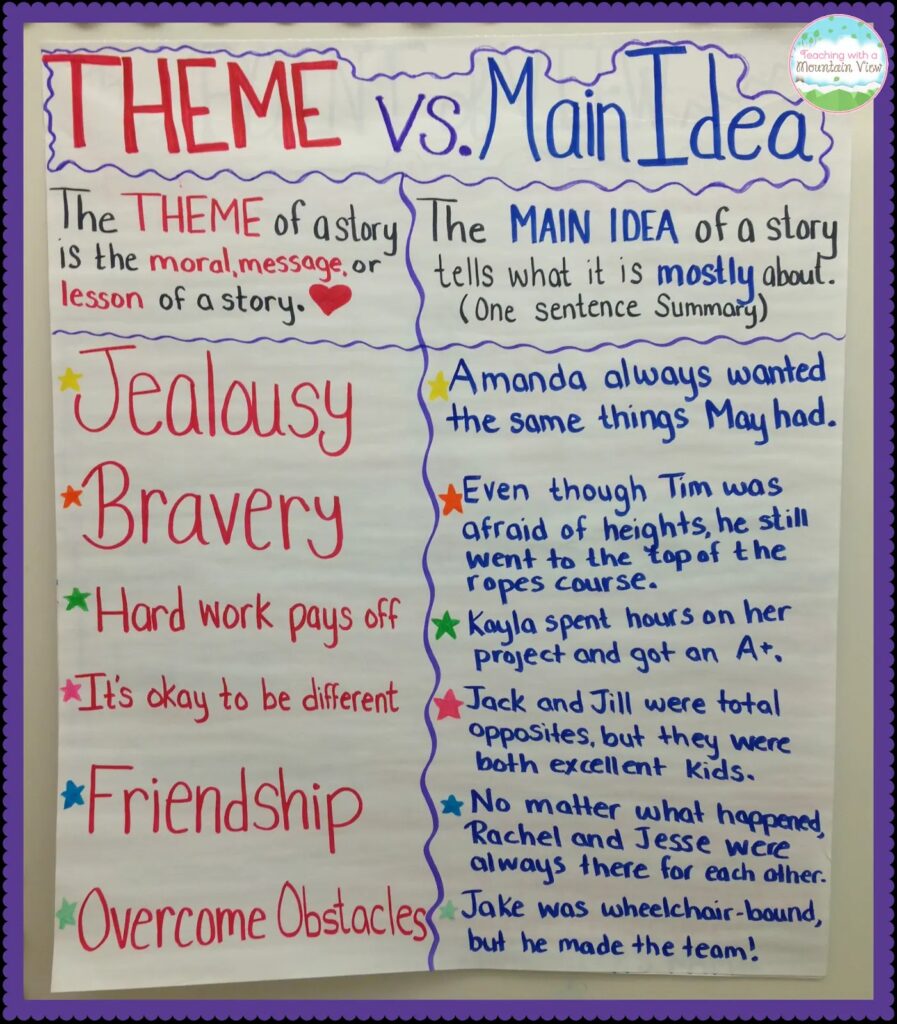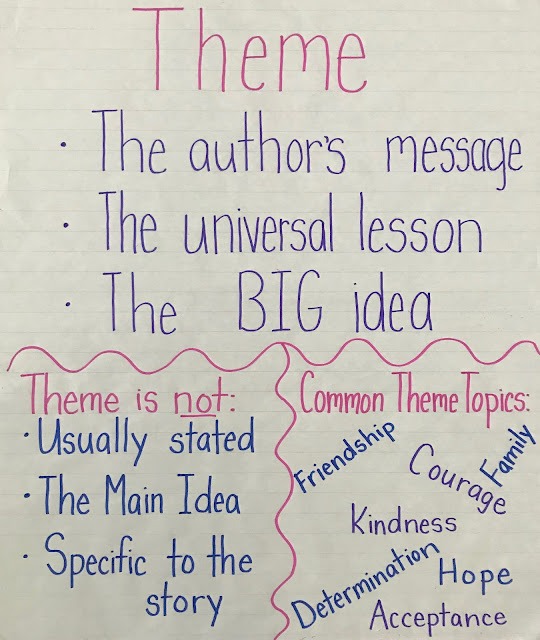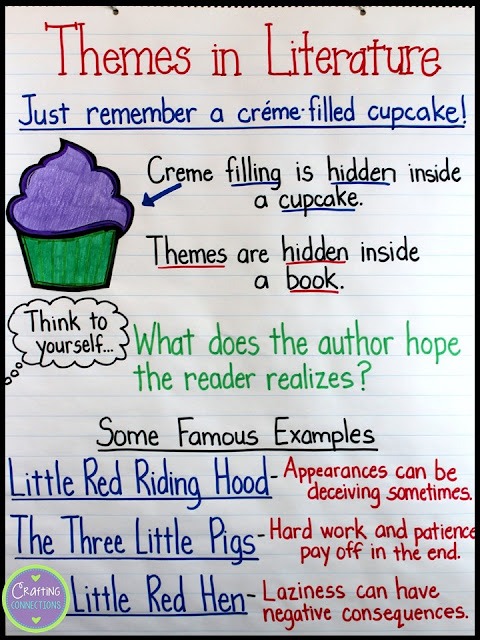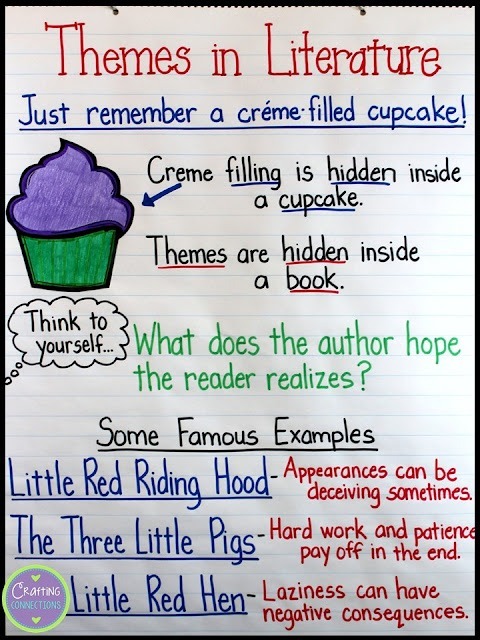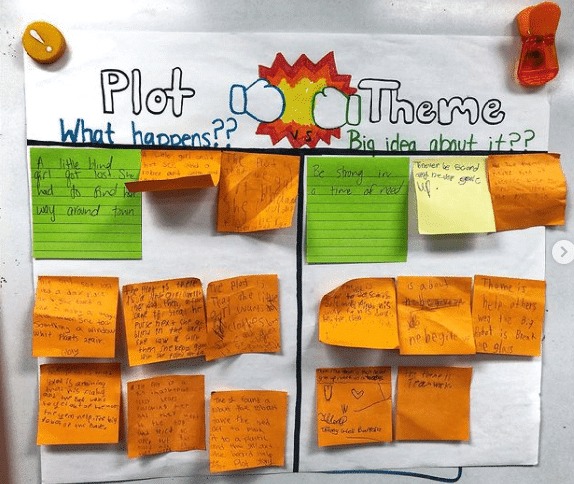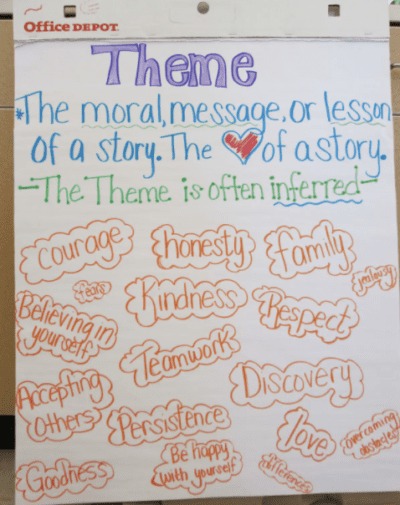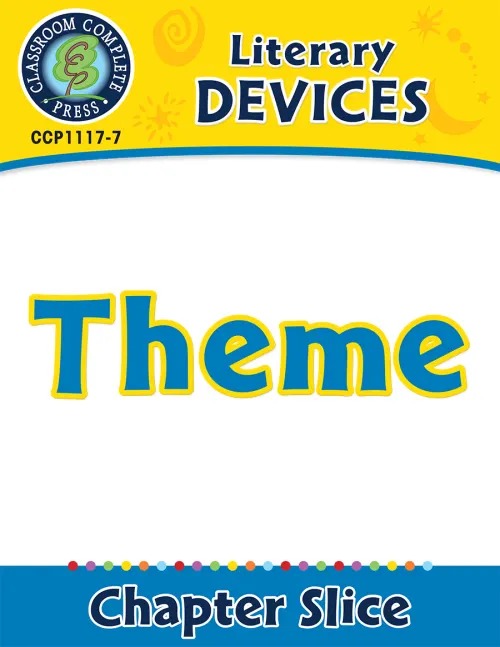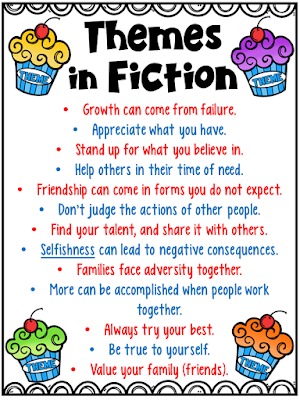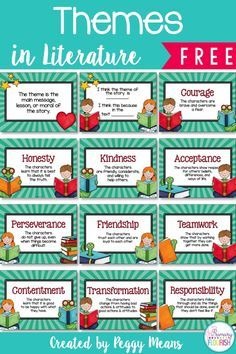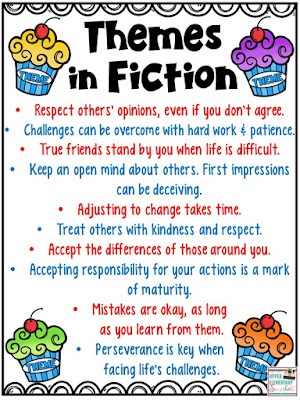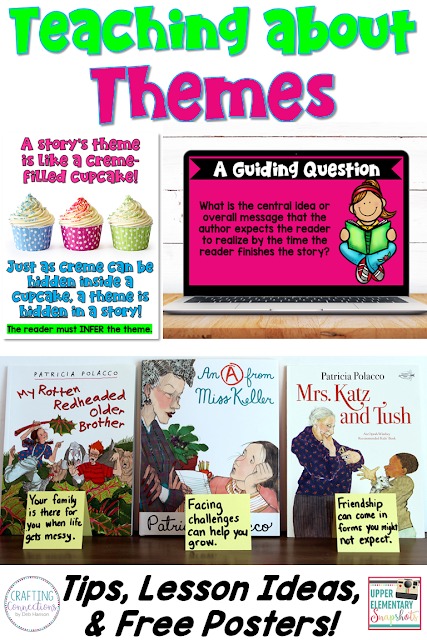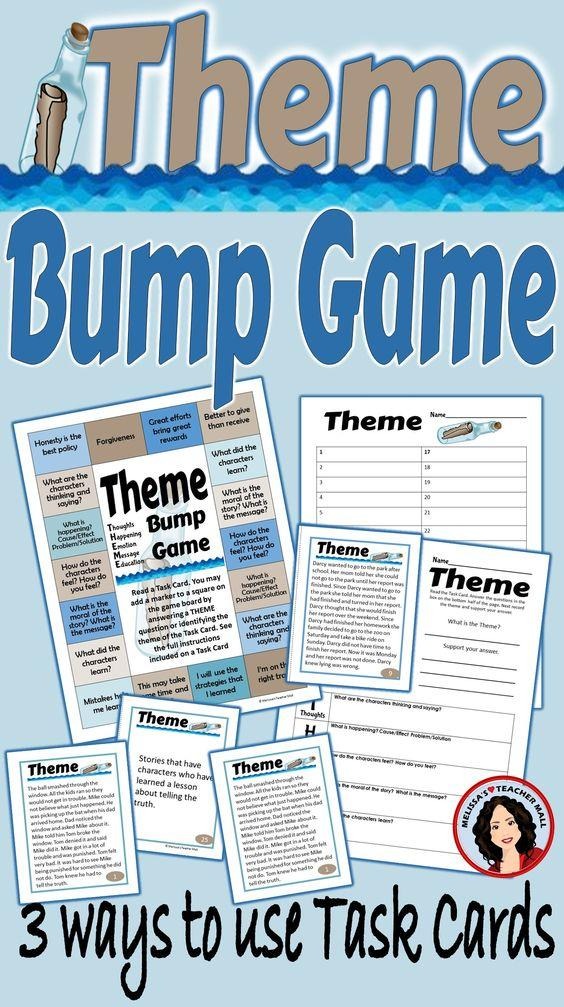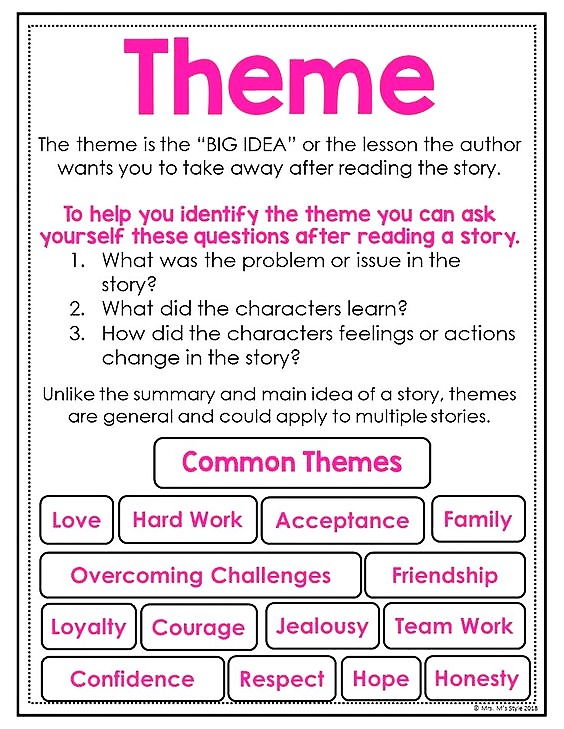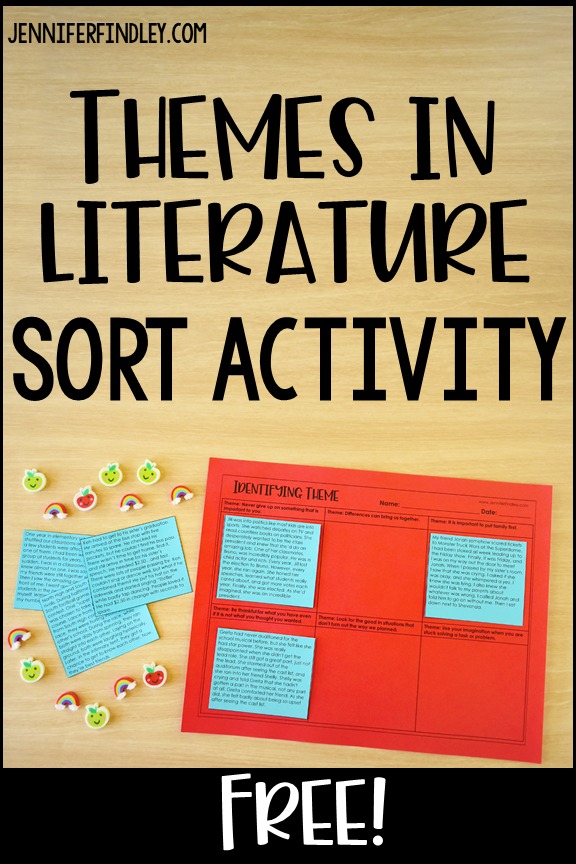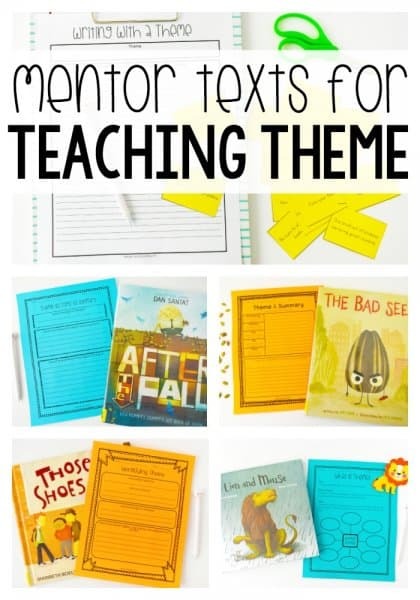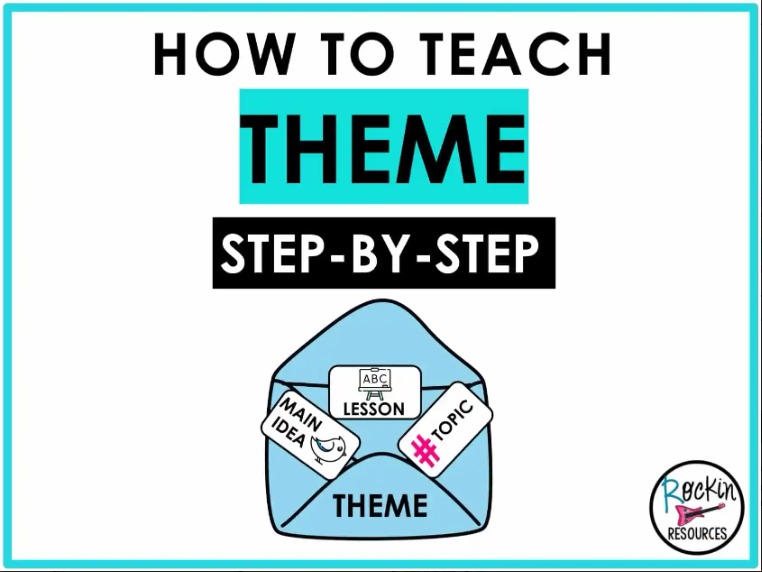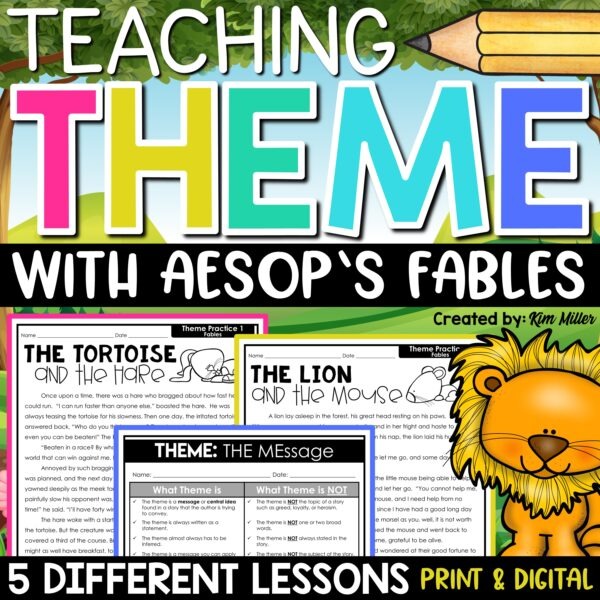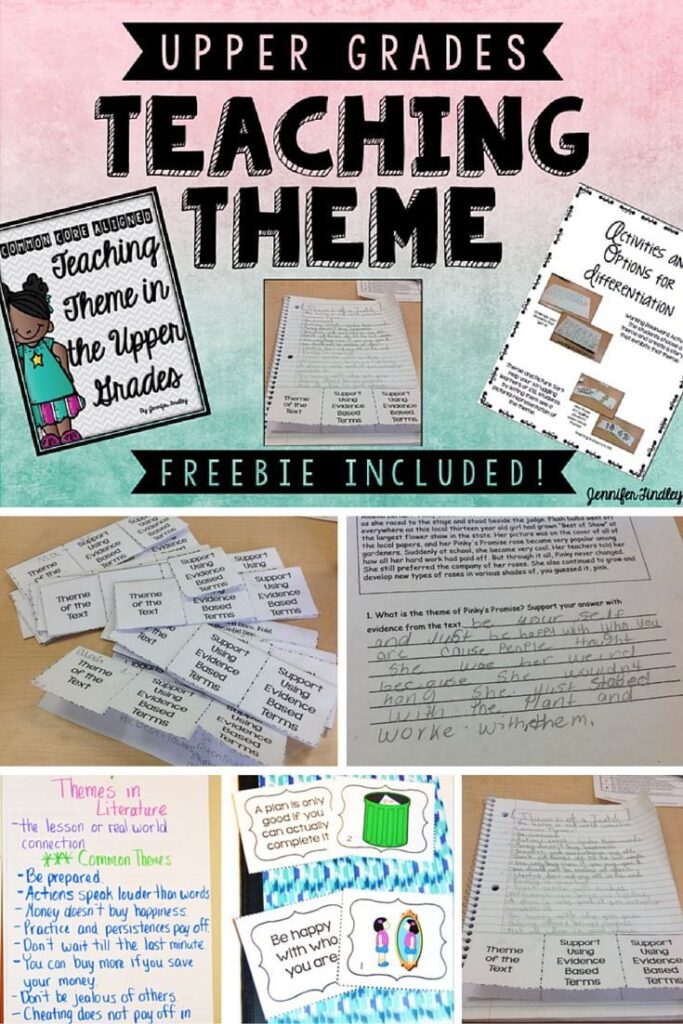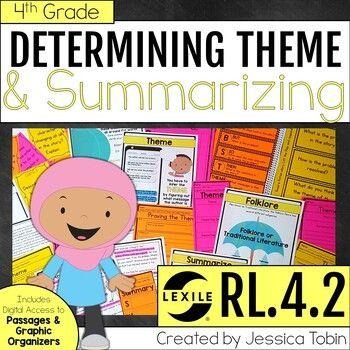Literature classes can sometimes be a little overwhelming for students. They have to learn about many concepts which sound similar at first sight, but you—their teacher—know how different they are. An anchor chart can help you do exactly what its name says—anchor your students and give them something they can turn to whenever they need a reminder of the information you’ve presented.
We’ll show you how a theme anchor chart works and how you can use them in your classes. We’ll also show you where you can find top-quality lesson plans and anchor charts on themes online.
What Is a Theme Anchor Chart
Identifying a theme of a written piece can be tricky. Unlike story elements and character traits, which can be stated, an author never talks about the theme explicitly.
A theme anchor chart will help you define a theme in general and show students how they can identify it while reading a story.
You can use different types of theme anchor charts, with the following being the most popular ones:
- Central message anchor chart
- Main idea vs. theme anchor chart
- Common themes anchor chart
- TPCASTT anchor chart
Table of Contents
- What Is a Theme Anchor Chart
- Elements of a Good Themes Anchor Chart
- Different Ways of Presenting Themes Anchor Charts
- Teaching theme – resources from Teach Simple
- Other literary theme resources
- Need Anchor Charts and Lesson Plans for Your Literature Class? Use Teach Simple
Elements of a Good Themes Anchor Chart
Literary themes are like a puzzle readers try to solve when analyzing a book. Your anchor chart will be their guide on how to do this, and it will serve as a broader reference for all the common themes that are explored in other books.
An Introduction to Common Literary Themes
Start by making a visual table or mind map of literary themes and then choosing the ones that are most fitting for your students. Using illustrations to drive home what each theme represents is always helpful.
The themes could be based on your school’s reading curriculum, or you could choose them based on the types of books your class likes to read. Themes can be general but should also be specific enough to be relevant to your student’s interests.
For example, if your high school class is reading Catcher in the Rye, growing up and alienation are two themes that carry through the story. Other common themes you could discuss include revenge, love, good vs evil, and redemption. These themes pop up in many books and stories, regardless of the age group you teach.
Relating Themes to Devices Within Specific Books
Now that you’ve given your students an idea of the types of themes you get, you can delve deeper into the story elements that bring these themes to life. Start a new mind map or chart that relates to specific milestones in the story, picking out keywords that summarize the theme.
Let’s use Catcher in the Rye as an example again. The main character, Holden Caulfield, is lonely, and throughout the story, he tries to connect with people he meets. But he is socially awkward and constantly fails to make the friends he needs. These feelings of alienation are a theme throughout the book.
Keywords: Lonely; tries to connect; fails to make friends = alienation.
Central Message Anchor Chart By Miss Moehle’s Second Grade Classroom
So, how do you determine a theme or a central message of a story? What steps should you take or questions should you ask yourself to come to a conclusion? A central message anchor chart should serve as a guide through the process of identifying a theme.
Try to come up with questions students can ask themselves that will help them identify a theme. Provide examples of themes so that they know what kind of answer they’re looking for.
Theme Vs. Main Idea Anchor Chart From Teaching With A Mountain View
For most students, the toughest part is determining the difference between the theme and the main idea of a story. A theme vs. main idea anchor chart will help you explain the two terms by comparing them with examples from stories they’re familiar with.
Aside from providing the definition, you can make it interactive and let students arrange examples in adequate columns.
Common Themes Anchor Chart
A common themes anchor chart can be a great way to make your lessons interactive. You can split your anchor charts into several parts, with each segment representing a common theme, such as:
- Friendship
- Family
- Jealousy
- Courage
- Hard work
- Love
- Respect
- Overcoming challenges
Students can then add examples of stories for each theme, and they can discuss whether one particular story is more about, say, jealousy or love.
TPCASTT Anchor Chart From Studylib
While it doesn’t focus on themes solely, a TPCASTT anchor chart is an exceptional tool for developing reading comprehension. It helps students analyze a story more thoroughly and find a theme more easily.
You can organize the anchor chart in a table, with each letter of TPCASTT representing a segment:
| Segment of the TPCASTT Anchor Chart | Explanation |
| T—Title | Let students predict what the story will be about based on the title |
| P—Paraphrase | Once they read the story or a poem, they should paraphrase it in their own words |
| C—Connotation | Let them try to understand the figurative language and realize what possible deeper meanings some words and sentences may have |
| A—Attitude | Students should try and determine the author’s attitude toward the subject |
| S—Shift | They should find any shift in feelings and attitudes from the beginning to the end of the story |
| T—Title Again | Has students’ interpretation of the title changed? |
| T—Theme | Finally, try to determine the theme of the story |
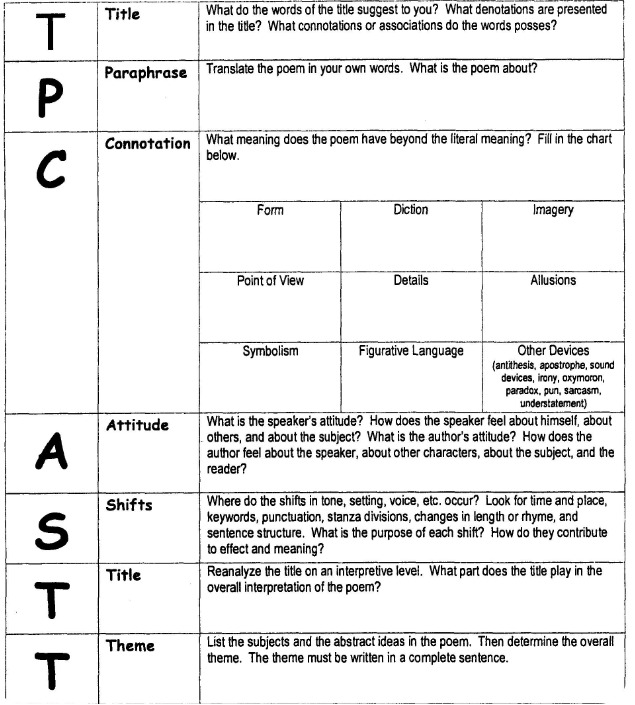
Different Ways of Presenting Themes Anchor Charts
There is no specific rule for creating anchor charts. But the more creative and visually engaging, the better. You want the students to be excited by what they see. So here’s a bit of themed inspiration to get the creativity flowing.
Define the concept simply and clearly From Upper Elementary Snapshots
The concept of a literary theme can seem a bit abstract to students. Show a simple definition.
Make it relevant From Crafting Connections
Students will always engage better when they can relate to the content. Use examples from well-known stories or a story you have read together.
Use other media to support you
Students love the opportunity to see a video during class time. You can use it before creating an anchor chart together or show it afterwards to consolidate.
Theme vs main idea By Michelle Krzmarzick
Theme and main idea are often confused by students. Use this anchor chart to clarify the two concepts.
Be interactive From We Are Teachers
Read a story together and then brainstorm the theme.
Display common themes From We Are Teachers
Some themes come up over and over again. Familiarize the students with common themes and see if they can recognize them when they do.
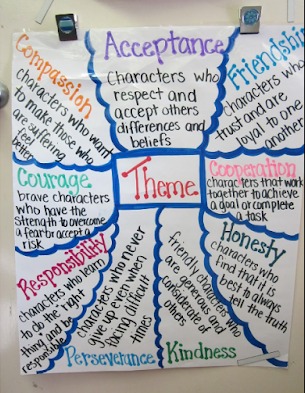
Teaching theme – resources from Teach Simple
Looking for a theme anchor chart that covers all the bases? Here is everything you need. All these charts and resources support the elements you need to get started to ensure your students understand how to recognize and interpret literary themes.
Literary devices: using graphic organizers to identify the theme By Classroom Complete Press
This is the chapter slice “Using Graphic Organizers to Identify Theme” from the complete lesson plan “Literary Devices”.
Theme essay workshop for any literary work By The Language of Educational Art, LLC
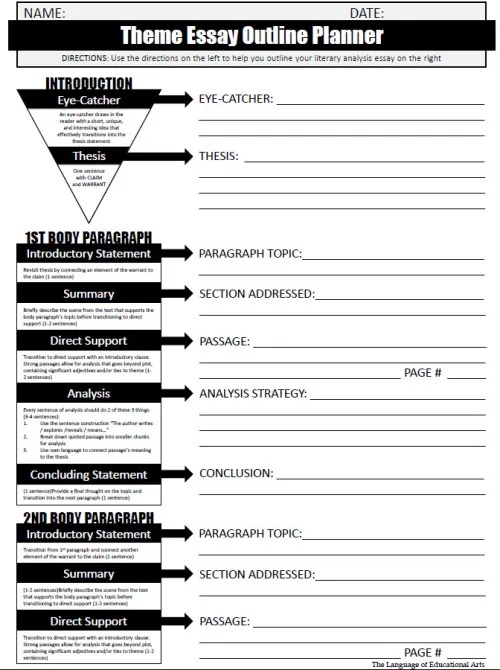
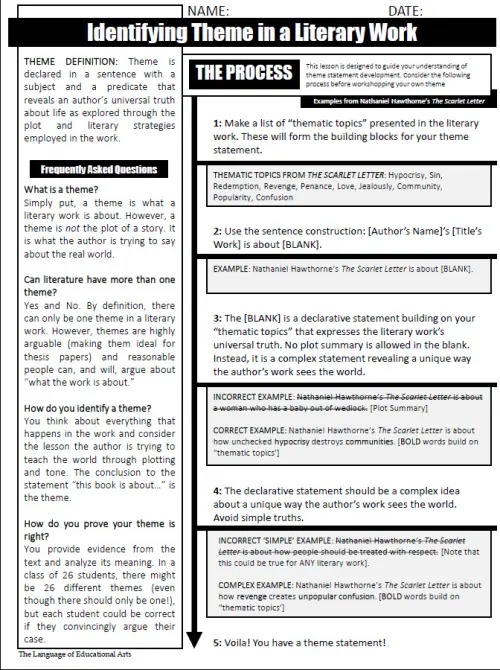
Theme essays are one of the core types of literary analysis and one of the most difficult to master. This workshop teaches students how to write a polished 5-paragraph literary analysis theme essay by taking them from developing a theme statement to literary works of their choice.
Other literary theme resources
Five ways to teach theme From Book Units Teacher
Finding the theme of a book can be both enjoyable and frustrating for students. Some students grasp the concept immediately, while others struggle. So here is a little goldmine of resources for early elementary teachers.
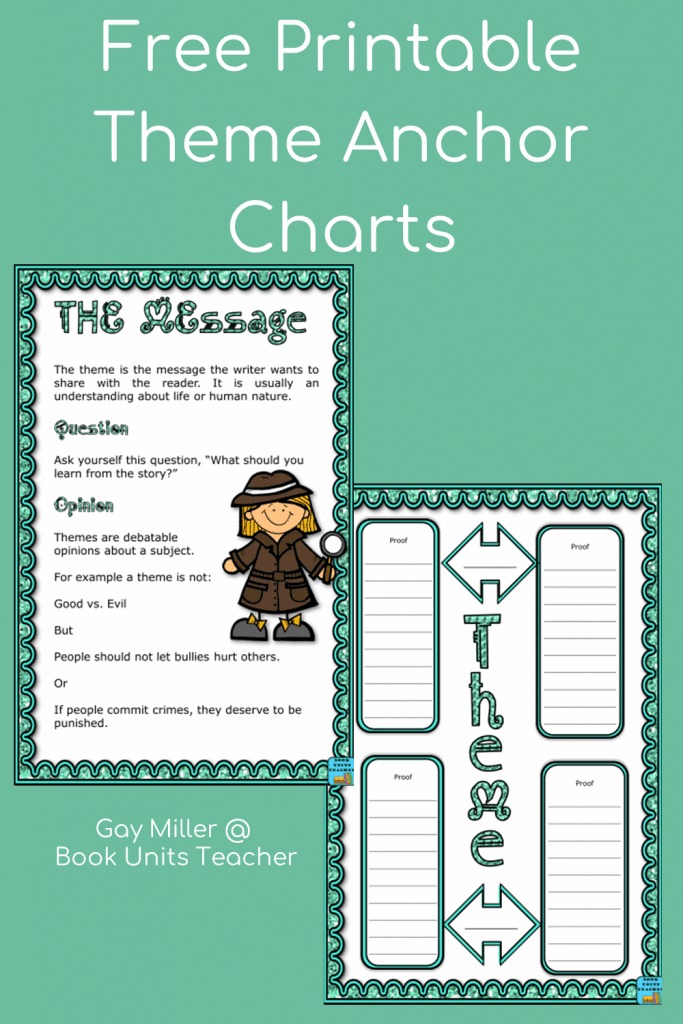
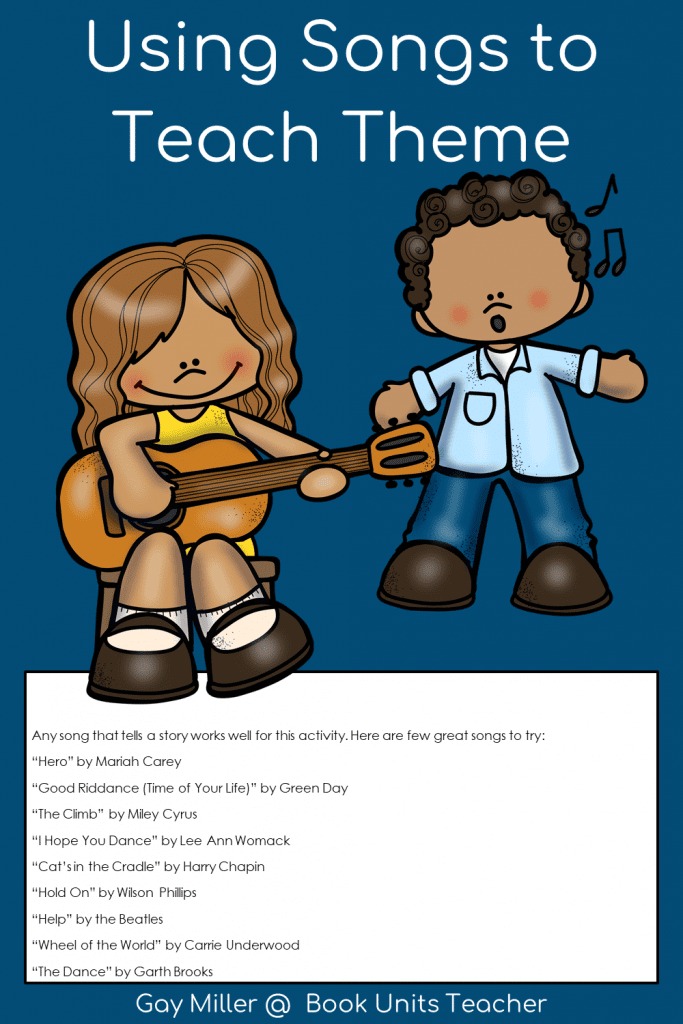
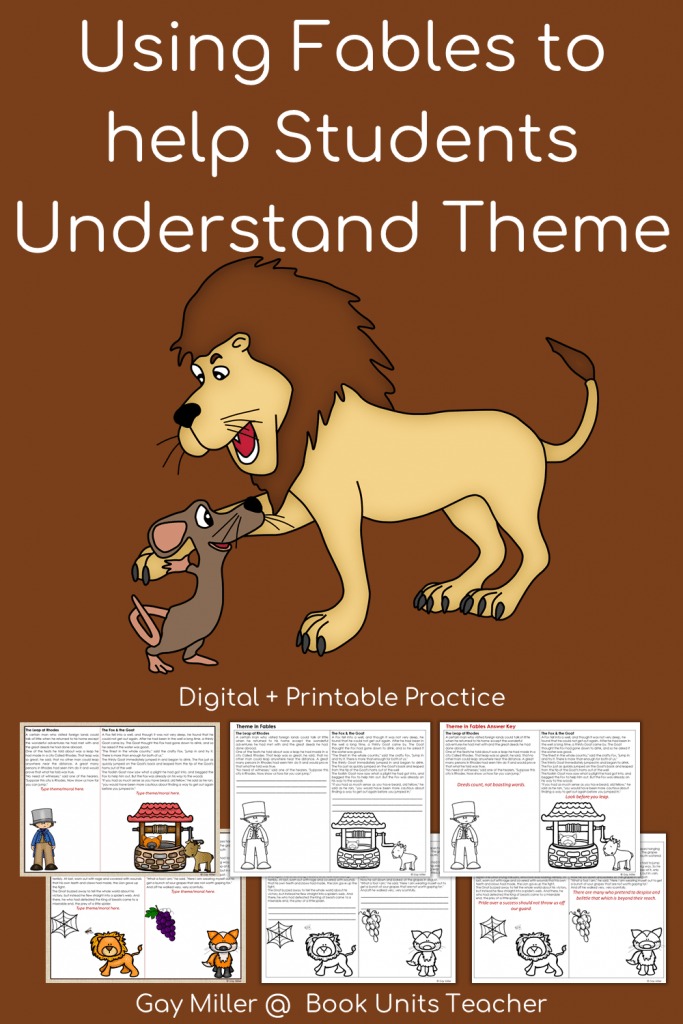
Themes in fiction posters From Crafting Connections
These bright, bold posters give detailed examples of different themes rather than a single word.
Themes In Literature From Otosection
Cupcake analogy for teaching theme From Crafting Connections
Story themes can be defined and explained using a cupcake analogy. In the same way that there is creme inside a cupcake, a theme is present in a story.
Teaching About Themes From Upper Elementary Snapshots
Theme’ bump’ activity From Melissa’s Teacher Mall
Theme is a complex subject for students to grasp. This game board uses graphic organizer questions to keep the students thinking about what to ask to determine the theme.
Keep it simple From Teach7g-Education
Clear and concise anchor charts are always a good thing.
Introducing the theme and central message From Digging Deeper
Students need to learn to locate the key message of their fictional texts. A theme must be phrased in a statement. For example, instead of ‘Friendship,’ students must pick a phrase like ‘always be faithful to your friends.
Themes in literature sorting activity By Jennifer Findley
This free sorting activity is perfect for activity stations and independent practice.
Mentor texts for teaching theme From Ashleigh’s Education Journey
Teaching themes become a breeze when using these mentor texts as lesson plan ideas. In addition, mentor texts make learning theme much more meaningful.
Step-by-step theme unit From Rockin Resources
Students will master several reading comprehension skills as they work through this step-by-step process to gain a thorough grasp of the theme. For example, from details in the text, students can identify the theme of a story, poem, or drama by first determining whether it is a comedy, a tragedy, a satire, etc.
Teaching Theme with Aesop’s Fables From A Love Of Teaching
Who doesn’t love a good fable? Aesop’s stories are loaded with opportunities to teach theme.
Teaching Theme in the Upper Grades From Art Of It
This unit offers anchor charts and different activities to teach theme to fifth graders.
Determining Theme in Literature Text and Summarizing From Elementary Nest
This unit is packed full of lesson plans, professionally Lexiled passages, and activities to use while you are teaching theme and summarizing skills.
Young students often struggle to understand the concept of theme. In addition, they need to grasp the moral lesson the writer is communicating and comprehend story elements and character development. So it is no wonder that teaching theme is so tricky.
Anchor charts are a great tool to assist students in learning independently. They provide an independent resource to help them answer questions, participate in discussions, process thoughts and write. Anchor charts also allow students to hear others’ ideas and process their own thinking before or while writing, reading, or engaging in other activities that would otherwise be difficult for them.
Need Anchor Charts and Lesson Plans for Your Literature Class? Use Teach Simple
Teach Simple is a subscription-based platform that offers thousands of lesson plans and anchor charts for all grades, including ELA and, more specifically, literature. You can find various materials for students from pre-K to high school.
All materials posted on Teach Simple are made by experienced teachers exclusively. Before a product goes public, other teachers review it to ensure it meets all the requirements. This way, you can rest assured you’re getting high-quality materials from people who know what it takes to keep students engaged and motivated to learn.
You can join Teach Simple for free using our 30-day trial, during which you can make unlimited downloads without any charge.
Our lesson plans for literature are packed with lesson plans, worksheets, PowerPoint presentations, and many theme anchor charts. Take a look at some of them:
- Fictional Narrative Writing Unit
- Siblings Day Narrative Writing Guide!
- Nonfiction vs. Fiction Comparison Anchor Chart
- Five Paragraph Essay Chart
- The Scholarship Jacket: Full Lesson Plan With PowerPoints & Graphic Organizers
- The Drummer Boy of Shiloh: Full Lesson Plan With PowerPoints & Graphic Organizers
- Two Kinds: Full Lesson Plan With PowerPoints & Graphic Organizers
- The Scarlet Ibis: Full Lesson Plan With PowerPoints & Graphic Organizers
- The Scribe: Full Lesson Plan With PowerPoints & Graphic Organizers
- Literary Devices: Character Chart—FLASH-MAC
- Through the Tunnel: Full Lesson Plan With PowerPoints & Graphic Organizers
- The Masque of Red Death: Full Lesson Plan With PowerPoints & Graphic Organizers
- What Do Fish Have To Do With Anything?: Full Lesson Plan With PowerPoints & Graphic Organizers
- The Pedestrian: Full Lesson Plan With PowerPoints & Graphic Organizers
- Anchor Charts for Writing
- Poetry Writing | Anchor Charts & Visuals
- Making Predictions Anchor Chart
- The Secret Life of Walter Mitty: Full Lesson Plan With PowerPoints & Graphic Organizers
- The Bet: Full Lesson Plan With PowerPoints & Graphic Organizers
